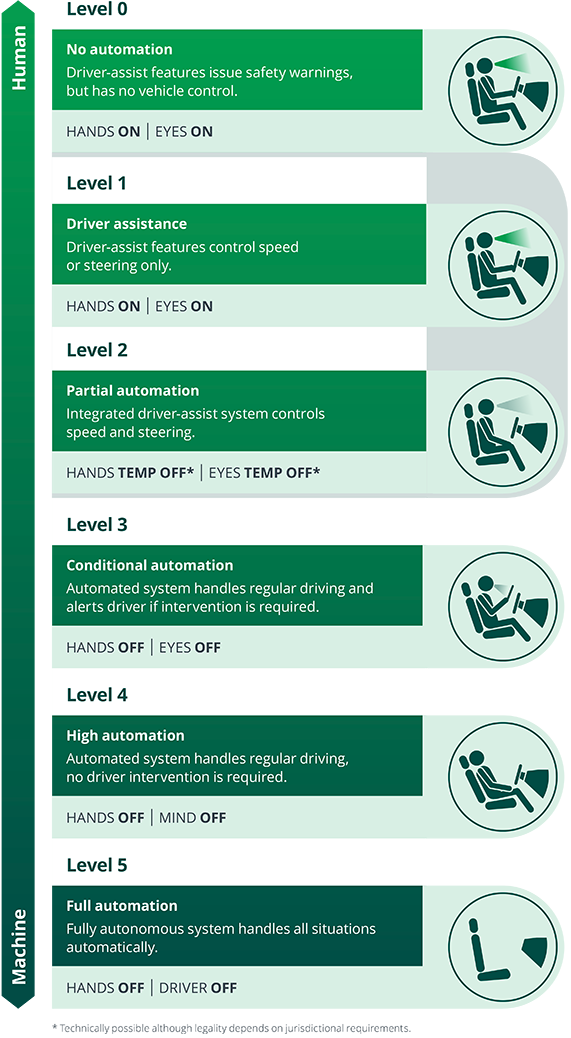About CAVs
Connected and automated vehicles (or CAVs, for short) are designed to help drivers by automatically performing some driving duties – for example, keeping inside lanes, adjusting speed and distance to the vehicle in front and observing speed limits – automatically.
In the future, CAVs may also be able to talk to each other and receive messages from roadside infrastructure.
Human error is reported to contribute to over 90 per cent of crashes on our roads today. CAVs could, in the future, help improve road safety and ease traffic congestion.
Different CAVs have different levels of automation. A partially automated vehicle can control both speed and steering. A fully automated CAV will be able to drive itself without the involvement of a driver. The diagram explains the evolution of CAVs. Currently some new vehicles on the market are considered to be partially automated or level two.

CAVs in Australia
Partially automated vehicles are already in Australia. However, it could be another 20 years before fully automated cars form the majority of the fleet on our roads. In a recent assessment of 20 countries’ preparedness for automated vehicles, Australia ranked fourteenth.
CAVs and change
Preparing for a future where cars are in charge of the road means thinking about roads, road rules and the wider transport network in new and complex ways.
For example, today we have hundreds of laws, rules and regulations guiding vehicle manufacturers, insurance providers, road operators, motorists and other road users. As automated vehicles become more prevalent on our roads, the rules we travel by, the laws we obey and the regulations we rely on to keep us safe may need altering.
The roads we drive on will not be immune to the arrival of CAVs. CAVs respond to signals on and around roads – but today’s roads are designed to communicate with people, not cars. Modifying and upgrading roads to meet CAV requirements will require a co-ordinated approach.
